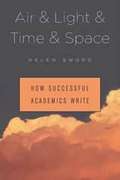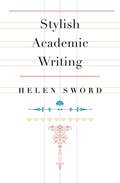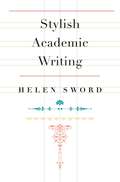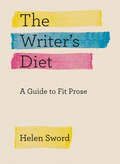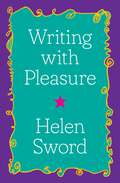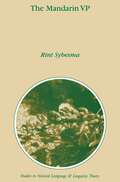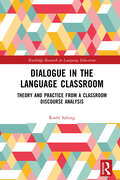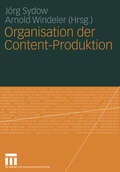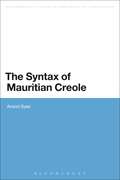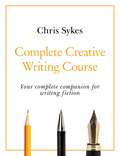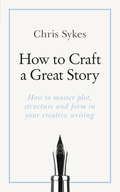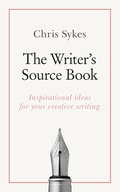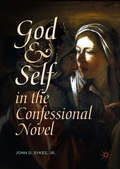- Table View
- List View
Building Socialism: Architecture and Urbanism in East German Literature, 1955-1973 (New Directions in German Studies)
by Curtis SwopeBuilding Socialism reveals how East German writers' engagement with the rapidly changing built environment from the mid-1950s to the early 1970s constitutes an untold story about the emergence of literary experimentation in the post-War period. It breaks new ground by exploring the centrality of architecture to a mid-century modernist literature in dialogue with multiple literary and left-wing theoretical traditions and in tune with international assessments of modernist architecture and urban planning. Design and construction were a central part of politics and everyday life in East Germany during this time as buildings old and new were asked to bear heavy ideological and social burdens. In their novels, stories, and plays, Heiner Müller, Christa Wolf, Günter Kunert, Volker Braun, Günter de Bruyn, and Brigitte Reimann responded to enormous new factory complexes, experimental new towns, the demolition of Berlin's tenements, and the propagation of a pared-down modernist aesthetic in interior design. Writers' representation of the design, construction, and use of architecture formed part of a turn to modernist literary devices, including montage, metaphor, and shifting narrative perspectives. East Germany's literary architecture also represents a sophisticated theoretical reflection on the intractable problems of East Germany's socialist modernity, including the alliance between state socialism and technological modernization, competing commitments to working-class self-organization and the power of specialist planners and designers, and the attempt to create an alternative to fascism.
Building Socialism: Architecture And Urbanism In East German Literature, 1955-1973 (New Directions In German Studies #19)
by Dr Curtis SwopeBuilding Socialism reveals how East German writers' engagement with the rapidly changing built environment from the mid-1950s to the early 1970s constitutes an untold story about the emergence of literary experimentation in the post-War period. It breaks new ground by exploring the centrality of architecture to a mid-century modernist literature in dialogue with multiple literary and left-wing theoretical traditions and in tune with international assessments of modernist architecture and urban planning. Design and construction were a central part of politics and everyday life in East Germany during this time as buildings old and new were asked to bear heavy ideological and social burdens. In their novels, stories, and plays, Heiner Müller, Christa Wolf, Günter Kunert, Volker Braun, Günter de Bruyn, and Brigitte Reimann responded to enormous new factory complexes, experimental new towns, the demolition of Berlin's tenements, and the propagation of a pared-down modernist aesthetic in interior design. Writers' representation of the design, construction, and use of architecture formed part of a turn to modernist literary devices, including montage, metaphor, and shifting narrative perspectives. East Germany's literary architecture also represents a sophisticated theoretical reflection on the intractable problems of East Germany's socialist modernity, including the alliance between state socialism and technological modernization, competing commitments to working-class self-organization and the power of specialist planners and designers, and the attempt to create an alternative to fascism.
Air & Light & Time & Space: How Successful Academics Write
by Helen SwordFrom the author of Stylish Academic Writing comes an essential new guide for writers aspiring to become more productive and take greater pleasure in their craft. Helen Sword interviewed 100 academics worldwide about their writing background and practices and shows how they find or create the conditions to get their writing done.
Air & Light & Time & Space: How Successful Academics Write
by Helen SwordFrom the author of Stylish Academic Writing comes an essential new guide for writers aspiring to become more productive and take greater pleasure in their craft. Helen Sword interviewed 100 academics worldwide about their writing background and practices and shows how they find or create the conditions to get their writing done.
Stylish Academic Writing
by Helen SwordElegant ideas deserve elegant expression. Sword dispels the myth that you can’t get published without writing wordy, impersonal prose. For scholars frustrated with disciplinary conventions or eager to write for a larger audience, here are imaginative, practical, witty pointers that show how to make articles and books enjoyable to read—and to write.
Stylish Academic Writing
by Helen SwordElegant data and ideas deserve elegant expression, argues Helen Sword in this lively guide to academic writing. For scholars frustrated with disciplinary conventions, and for specialists who want to write for a larger audience but are unsure where to begin, here are imaginative, practical, witty pointers that show how to make articles and books a pleasure to read—and to write.Dispelling the myth that you cannot get published without writing wordy, impersonal prose, Sword shows how much journal editors and readers welcome work that avoids excessive jargon and abstraction. Sword’s analysis of more than a thousand peer-reviewed articles across a wide range of fields documents a startling gap between how academics typically describe good writing and the turgid prose they regularly produce.Stylish Academic Writing showcases a range of scholars from the sciences, humanities, and social sciences who write with vividness and panache. Individual chapters take up specific elements of style, such as titles and headings, chapter openings, and structure, and close with examples of transferable techniques that any writer can master.
The Writer's Diet: A Guide to Fit Prose (Chicago Guides to Writing, Editing, and Publishing)
by Helen SwordDo your sentences sag? Could your paragraphs use a pick-me-up? If so, The Writer’s Diet is for you! It’s a short, sharp introduction to great writing that will help you energize your prose and boost your verbal fitness. Helen Sword dispenses with excessive explanations and overwrought analysis. Instead, she offers an easy-to-follow set of writing principles: use active verbs whenever possible; favor concrete language over vague abstractions; avoid long strings of prepositional phrases; employ adjectives and adverbs only when they contribute something new to the meaning of a sentence; and reduce your dependence on four pernicious “waste words”: it, this, that, and there. Sword then shows the rules in action through examples from William Shakespeare, Emily Dickinson, Martin Luther King Jr., John McPhee, A. S. Byatt, Richard Dawkins, Alison Gopnik, and many more. A writing fitness test encourages you to assess your own writing and get immediate advice on addressing problem areas. While The Writer’s Diet is as sleek and concise as the writing ideals contained within, this slim volume packs a powerful punch. With Sword’s coaching writers of all levels can strengthen and tone their sentences with the stroke of a pen or the click of a mouse. As with any fitness routine, adhering to the rules requires energy and vigilance. The results, however, will speak for themselves.
The Writer's Diet: A Guide to Fit Prose (Chicago Guides to Writing, Editing, and Publishing)
by Helen SwordDo your sentences sag? Could your paragraphs use a pick-me-up? If so, The Writer’s Diet is for you! It’s a short, sharp introduction to great writing that will help you energize your prose and boost your verbal fitness. Helen Sword dispenses with excessive explanations and overwrought analysis. Instead, she offers an easy-to-follow set of writing principles: use active verbs whenever possible; favor concrete language over vague abstractions; avoid long strings of prepositional phrases; employ adjectives and adverbs only when they contribute something new to the meaning of a sentence; and reduce your dependence on four pernicious “waste words”: it, this, that, and there. Sword then shows the rules in action through examples from William Shakespeare, Emily Dickinson, Martin Luther King Jr., John McPhee, A. S. Byatt, Richard Dawkins, Alison Gopnik, and many more. A writing fitness test encourages you to assess your own writing and get immediate advice on addressing problem areas. While The Writer’s Diet is as sleek and concise as the writing ideals contained within, this slim volume packs a powerful punch. With Sword’s coaching writers of all levels can strengthen and tone their sentences with the stroke of a pen or the click of a mouse. As with any fitness routine, adhering to the rules requires energy and vigilance. The results, however, will speak for themselves.
The Writer's Diet: A Guide to Fit Prose (Chicago Guides to Writing, Editing, and Publishing)
by Helen SwordDo your sentences sag? Could your paragraphs use a pick-me-up? If so, The Writer’s Diet is for you! It’s a short, sharp introduction to great writing that will help you energize your prose and boost your verbal fitness. Helen Sword dispenses with excessive explanations and overwrought analysis. Instead, she offers an easy-to-follow set of writing principles: use active verbs whenever possible; favor concrete language over vague abstractions; avoid long strings of prepositional phrases; employ adjectives and adverbs only when they contribute something new to the meaning of a sentence; and reduce your dependence on four pernicious “waste words”: it, this, that, and there. Sword then shows the rules in action through examples from William Shakespeare, Emily Dickinson, Martin Luther King Jr., John McPhee, A. S. Byatt, Richard Dawkins, Alison Gopnik, and many more. A writing fitness test encourages you to assess your own writing and get immediate advice on addressing problem areas. While The Writer’s Diet is as sleek and concise as the writing ideals contained within, this slim volume packs a powerful punch. With Sword’s coaching writers of all levels can strengthen and tone their sentences with the stroke of a pen or the click of a mouse. As with any fitness routine, adhering to the rules requires energy and vigilance. The results, however, will speak for themselves.
The Writer's Diet: A Guide to Fit Prose (Chicago Guides to Writing, Editing, and Publishing)
by Helen SwordDo your sentences sag? Could your paragraphs use a pick-me-up? If so, The Writer’s Diet is for you! It’s a short, sharp introduction to great writing that will help you energize your prose and boost your verbal fitness. Helen Sword dispenses with excessive explanations and overwrought analysis. Instead, she offers an easy-to-follow set of writing principles: use active verbs whenever possible; favor concrete language over vague abstractions; avoid long strings of prepositional phrases; employ adjectives and adverbs only when they contribute something new to the meaning of a sentence; and reduce your dependence on four pernicious “waste words”: it, this, that, and there. Sword then shows the rules in action through examples from William Shakespeare, Emily Dickinson, Martin Luther King Jr., John McPhee, A. S. Byatt, Richard Dawkins, Alison Gopnik, and many more. A writing fitness test encourages you to assess your own writing and get immediate advice on addressing problem areas. While The Writer’s Diet is as sleek and concise as the writing ideals contained within, this slim volume packs a powerful punch. With Sword’s coaching writers of all levels can strengthen and tone their sentences with the stroke of a pen or the click of a mouse. As with any fitness routine, adhering to the rules requires energy and vigilance. The results, however, will speak for themselves.
Writing with Pleasure (Skills for Scholars)
by Helen SwordAn essential guide to cultivating joy in your professional and personal writingWriting should be a pleasurable challenge, not a painful chore. Writing with Pleasure empowers academic, professional, and creative writers to reframe their negative emotions about writing and reclaim their positive ones. By learning how to cast light on the shadows, you will soon find yourself bringing passion and pleasure to everything you write.Acclaimed international writing expert Helen Sword invites you to step into your “WriteSPACE”—a space of pleasurable writing that is socially balanced, physically engaged, aesthetically nourishing, creatively challenging, and emotionally uplifting. Sword weaves together cutting-edge findings in the sciences and social sciences with compelling narratives gathered from nearly six hundred faculty members and graduate students from across the disciplines and around the world. She provides research-based principles, hands-on strategies, and creative “pleasure prompts” designed to help you ramp up your productivity and enhance the personal rewards of your writing practice. Whether you’re writing a scholarly article, an administrative email, or a love letter, this book will inspire you to find delight in even the most mundane writing tasks and a richer, deeper pleasure in those you already enjoy.Exuberantly illustrated by prizewinning graphic memoirist Selina Tusitala Marsh, Writing with Pleasure is an indispensable resource for academics, students, professionals, and anyone for whom writing has come to feel like a burden rather than a joy.
Writing with Pleasure (Skills for Scholars)
by Helen SwordAn essential guide to cultivating joy in your professional and personal writingWriting should be a pleasurable challenge, not a painful chore. Writing with Pleasure empowers academic, professional, and creative writers to reframe their negative emotions about writing and reclaim their positive ones. By learning how to cast light on the shadows, you will soon find yourself bringing passion and pleasure to everything you write.Acclaimed international writing expert Helen Sword invites you to step into your “WriteSPACE”—a space of pleasurable writing that is socially balanced, physically engaged, aesthetically nourishing, creatively challenging, and emotionally uplifting. Sword weaves together cutting-edge findings in the sciences and social sciences with compelling narratives gathered from nearly six hundred faculty members and graduate students from across the disciplines and around the world. She provides research-based principles, hands-on strategies, and creative “pleasure prompts” designed to help you ramp up your productivity and enhance the personal rewards of your writing practice. Whether you’re writing a scholarly article, an administrative email, or a love letter, this book will inspire you to find delight in even the most mundane writing tasks and a richer, deeper pleasure in those you already enjoy.Exuberantly illustrated by prizewinning graphic memoirist Selina Tusitala Marsh, Writing with Pleasure is an indispensable resource for academics, students, professionals, and anyone for whom writing has come to feel like a burden rather than a joy.
The Mandarin VP (Studies in Natural Language and Linguistic Theory #44)
by Rint SybesmaThe Mandarin VP deals with a number of constructions in Mandarin Chinese which involve the main verb and the material following it, like the object NPs, resultative phrases, durative expressions and other elements. The basis claim defended in this book is that all elements that follow the main verb in a Mandarin sentence form one single constituent which functions as the complement of the verb. The Mandarin VP offers new and original analyses of such hot issues as resultative constructions, the ba-construction and verb-le. In addition, the conclusions drawn from the research into Mandarin syntax are discussed in more general theoretic terms, which leads to original proposals regarding the internal make-up of accomplishments and the status of Theta Theory. The research reported on in this book was concluded within the bounds of mainstream generative theorizing. The Mandarin VP is of interest to all syntacticians, especially those interested in Chinese.
Dialogue in the Language Classroom: Theory and Practice from a Classroom Discourse Analysis (Routledge Research in Language Education)
by Roehl SybingBy providing a contemporary understanding of theories on classroom dialogue through a sociocultural lens, Sybing offers innovative ways to observe and foster more engaged interaction between teacher and student, particularly in language learning contexts. How teachers interact with students has a profound impact on learning outcomes and learner development yet remains a topic that requires more attention in language education. As research and practice in all education domains shift toward more dialogic approaches to the co-construction of knowledge, language education can also benefit from a more comprehensive approach to classroom dialogue that is relevant to interaction with language learners. This book provides a foundational understanding of theories of classroom dialogue relevant to language classroom contexts, which will guide an analysis of teacher–student interactions taken from observations of a language classroom in order to propose a framework for language classroom dialogue for theory and practice. Researchers and practitioners in language education will benefit from a comprehensive overview of discussion of and contemporary research in classroom interaction, sociocultural theory, and intercultural communication. This book offers useful guidance to scholars where such discussions are especially useful for addressing issues of native-speakerism and language ownership.
Dialogue in the Language Classroom: Theory and Practice from a Classroom Discourse Analysis (Routledge Research in Language Education)
by Roehl SybingBy providing a contemporary understanding of theories on classroom dialogue through a sociocultural lens, Sybing offers innovative ways to observe and foster more engaged interaction between teacher and student, particularly in language learning contexts. How teachers interact with students has a profound impact on learning outcomes and learner development yet remains a topic that requires more attention in language education. As research and practice in all education domains shift toward more dialogic approaches to the co-construction of knowledge, language education can also benefit from a more comprehensive approach to classroom dialogue that is relevant to interaction with language learners. This book provides a foundational understanding of theories of classroom dialogue relevant to language classroom contexts, which will guide an analysis of teacher–student interactions taken from observations of a language classroom in order to propose a framework for language classroom dialogue for theory and practice. Researchers and practitioners in language education will benefit from a comprehensive overview of discussion of and contemporary research in classroom interaction, sociocultural theory, and intercultural communication. This book offers useful guidance to scholars where such discussions are especially useful for addressing issues of native-speakerism and language ownership.
Organisation der Content-Produktion
by Jörg Sydow Arnold Windeler"Content is King." Das ist in der Medienindustrie wohl bekannt. Unklarheiten bestehen dagegen bei der Frage, wie heute die Produktion von Content in dieser Branche koordiniert wird. Empirisch greift der Sammelband Fragen digitaler Technik und neuer Modelle der Produktionsorganisation auf. Er widmet sich der digitalen Nachrichtenproduktion, der projektförmigen Herstellung von Unterhaltung durch Fernsehproduzenten außerhalb der Fernsehanstalten sowie der Frage der Substitution von Intermediären durch Peer-to-peer-Systeme bei der Mehrfachverwertung von Content.
A Comprehensive and Comparative Grammar of English Creoles
by Anand SyeaA Comprehensive and Comparative Grammar of English Creoles provides a detailed, comprehensive description of the morphology, grammar, and syntax of a selected number of English creoles, including those spoken on both sides of the Atlantic and the Pacific. This book: • Focuses on a number of traditional grammatical categories to provide a comprehensive description and discussion of these languages; • Identifies not only how creoles differ from their lexifier, but also how they differ from one another; • Provides effective comparative descriptions to enable an insightful understanding of language evolution. This book will be ideal supplementary reading for students and researchers of linguistics, and will particularly appeal to those with an interest in descriptive linguistics, historical linguistics, World Englishes, contact and creole linguistics, and language policy and planning.
A Comprehensive and Comparative Grammar of English Creoles
by Anand SyeaA Comprehensive and Comparative Grammar of English Creoles provides a detailed, comprehensive description of the morphology, grammar, and syntax of a selected number of English creoles, including those spoken on both sides of the Atlantic and the Pacific. This book: • Focuses on a number of traditional grammatical categories to provide a comprehensive description and discussion of these languages; • Identifies not only how creoles differ from their lexifier, but also how they differ from one another; • Provides effective comparative descriptions to enable an insightful understanding of language evolution. This book will be ideal supplementary reading for students and researchers of linguistics, and will particularly appeal to those with an interest in descriptive linguistics, historical linguistics, World Englishes, contact and creole linguistics, and language policy and planning.
The Syntax of Mauritian Creole (Bloomsbury Studies in Theoretical Linguistics)
by Anand SyeaCreolelanguages have in recent years become a valuable source of data for currenttheories of syntax and theories of child/adult languageacquisition. However, grammars of these languages, particularly thosecouched within theoretical frameworks of one kind of another, are few and farbetween. This book contributes directly to creole linguistics by providing adetailed study of different aspects of the syntax of Mauritian creole withinthe theoretical framework of Principles and Parameters (Chomsky, 1981) andMinimalism (1995). It gives the reader a detailed account of the structureof this language and insight into the nature of creole languages, withimplications for current cartographic and minimalist thinking on the structureand derivation of phrases and clauses. It will appeal to researchers ofgrammar and syntax, language acquisition, contact linguistics andsociolinguistics.
The Syntax of Mauritian Creole (Bloomsbury Studies in Theoretical Linguistics)
by Anand SyeaCreolelanguages have in recent years become a valuable source of data for currenttheories of syntax and theories of child/adult languageacquisition. However, grammars of these languages, particularly thosecouched within theoretical frameworks of one kind of another, are few and farbetween. This book contributes directly to creole linguistics by providing adetailed study of different aspects of the syntax of Mauritian creole withinthe theoretical framework of Principles and Parameters (Chomsky, 1981) andMinimalism (1995). It gives the reader a detailed account of the structureof this language and insight into the nature of creole languages, withimplications for current cartographic and minimalist thinking on the structureand derivation of phrases and clauses. It will appeal to researchers ofgrammar and syntax, language acquisition, contact linguistics andsociolinguistics.
Complete Creative Writing Course: Your complete companion for writing creative fiction
by Chris SykesLEARN HOW TO WRITE CREATIVELY WITH THIS COMPREHENSIVE AND PRACTICAL COURSE.The only comprehensive Creative Writing title on the market that goes beyond introducing the basic genres to offering a complete journey along the writing path, including material on editing, redrafting and polishing a piece of work. Featuring the unique Workshop exercises to encourage readers to hone their work rather than just progressing through a number of exercises.Takes the reader from complete beginner or committed amateur to the point you've completed, edited and redrafted your work and are ready for publication.ABOUT THE SERIESThe Teach Yourself Creative Writing series helps aspiring authors tell their story. Covering a range of genres from science fiction and romantic novels, to illustrated children's books and comedy, this series is packed with advice, exercises and tips for unlocking creativity and improving your writing. And because we know how daunting the blank page can be, we set up the Just Write online community at tyjustwrite, for budding authors and successful writers to connect and share.
Complete Creative Writing Course: Your complete companion for writing creative fiction
by Chris SykesLEARN HOW TO WRITE CREATIVELY WITH THIS COMPREHENSIVE AND PRACTICAL COURSE.The only comprehensive Creative Writing title on the market that goes beyond introducing the basic genres to offering a complete journey along the writing path, including material on editing, redrafting and polishing a piece of work. Featuring the unique Workshop exercises to encourage readers to hone their work rather than just progressing through a number of exercises.Takes the reader from complete beginner or committed amateur to the point you've completed, edited and redrafted your work and are ready for publication.ABOUT THE SERIESThe Teach Yourself Creative Writing series helps aspiring authors tell their story. Covering a range of genres from science fiction and romantic novels, to illustrated children's books and comedy, this series is packed with advice, exercises and tips for unlocking creativity and improving your writing. And because we know how daunting the blank page can be, we set up the Just Write online community at tyjustwrite, for budding authors and successful writers to connect and share.
How to Craft a Great Story: Teach Yourself Creating Perfect Plot and Structure (Teach Yourself)
by Chris SykesLEARN HOW TO PLOT AND STRUCTURE YOUR CREATIVE WRITING.How to Craft a Great Story takes you step by step through the process of creating a compelling and coherent plot and structure. It covers such basics as the traditional story arcs, and such advanced information as finding balance and marrying structure and form. Each chapter contains a diagnostic test, case studies, practical exercises and Aide Memoire boxes. Each chapter concludes with a reminder of the key points of the chapter (Focus Points) and a round-up of what to expect in the next (Next Step) will whet your appetite for what's coming and how it relates to what you've just read. Covering some of the most commonly raised questions in creative writing courses, it is perfect for anyone who needs the next step on from the basic 'how to write a novel'.ABOUT THE SERIESThe Teach Yourself Creative Writing series helps aspiring authors tell their story. Covering a range of genres from science fiction and romantic novels, to illustrated children's books and comedy, this series is packed with advice, exercises and tips for unlocking creativity and improving your writing. And because we know how daunting the blank page can be, we set up the Just Write online community at tyjustwrite, for budding authors and successful writers to connect and share.
The Writer's Source Book: Inspirational ideas for your creative writing (Teach Yourself)
by Chris SykesLEARN NEW AND INSPIRING WAYS OF LIFTING YOUR CREATIVE WRITING.Is your creative writing in need of inspiration? Do you need confidence to create watertight plots and believable characters?The Writer's Source Book provides dozens of practical exercises to help you create storylines, craft people and generate ideas, with support and creative insight for every stage.It will give you support in identifying your genre and crafting your work around it, and help you to understand the complexities of plot and character before beginning to create your own.Inspired and inspiring exercises will help you master the structure of your book, story or play, while focused and innovative advise will help those who have run into trouble. This is a technical manual ideal for any writer who needs to build, fix, polish or perfect their storyline.ABOUT THE SERIESThe Teach Yourself Creative Writing series helps aspiring authors tell their story. Covering a range of genres from science fiction and romantic novels, to illustrated children's books and comedy, this series is packed with advice, exercises and tips for unlocking creativity and improving your writing. And because we know how daunting the blank page can be, we set up the Just Write online community at tyjustwrite, for budding authors and successful writers to connect and share.
God and Self in the Confessional Novel
by John D. Sykes Jr.God and Self in the Confessional Novel explores the question: what happened to the theological practice of confession when it entered the modern novel? Beginning with the premise that guilt remains a universal human concern, this book considers confession via the classic confessional texts of Augustine and Rousseau. Employing this framework, John D. Sykes, Jr. examines Goethe’s The Sorrows of Young Werther, Dostoevsky’s Notes from Underground, Percy’s Lancelot, and McEwan’s Atonement to investigate the evolution of confession and guilt in literature from the eighteenth century to the early twenty-first century.



